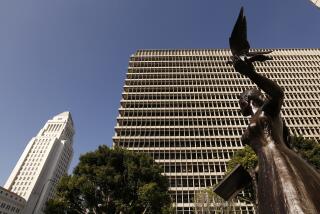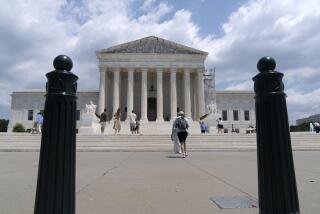Press Freedom: It’s No. 1
There must have been a judgment-clouding fog in the air Thursday. Something made a San Bernardino judge and lawyers who should have known better think they could kiss off the Constitution and keep the public in the dark about information it has a right to evaluate. The legal name for what they attempted is “prior restraint,” and this nation’s courts have repeatedly ruled that it should be allowed only in the most extraordinary circumstances, if at all. Neither of these latest efforts to impose secrecy comes close to meeting that standard.
These slaps at the 1st Amendment involve this newspaper and other Southern California news outlets. Late Thursday night, a lawyer for the Los Angeles Catholic Archdiocese tried to persuade Los Angeles Superior Court Judge David Yaffe to prevent the publication of e-mails in which Cardinal Roger M. Mahony discussed with his attorney the alleged sexual misconduct of priests. The attorney argued that the e-mails were protected by attorney-client privilege and had been obtained illegally and therefore their publication should be stopped. Just before midnight, the judge refused, saying “that’s what I don’t think the Constitution permits me to do.”
Another judge that day issued a ruling that was not nearly so sage. Last week, San Bernardino County Judge Robert Fawke allowed photographers from The Times and the Press-Enterprise of Riverside to take courtroom pictures of a police officer charged with 27 counts of kidnapping, rape and battery. On Thursday, after defense and prosecution attorneys complained that printing the photos would interfere with the case, the judge barred publication, citing the defendant’s right to a fair trial.
Bad call. The newspapers are appealing. Court rulings have established that the 1st Amendment takes precedence over the 6th Amendment. Cases going back to 1971 and President Richard Nixon’s efforts to prevent the New York Times and the Washington Post from publishing the Pentagon Papers make it clear that the public’s right to receive information is virtually sacred. The first case may have been an effort by the archdiocese to cover up a cover-up. The San Bernardino case is a matter of a judge who got his constitutional priorities confused. Together they suggest that representatives of the church and state alike need refresher courses in the meaning of a “free press” and its significance in a democracy.
More to Read
Sign up for Essential California
The most important California stories and recommendations in your inbox every morning.
You may occasionally receive promotional content from the Los Angeles Times.










